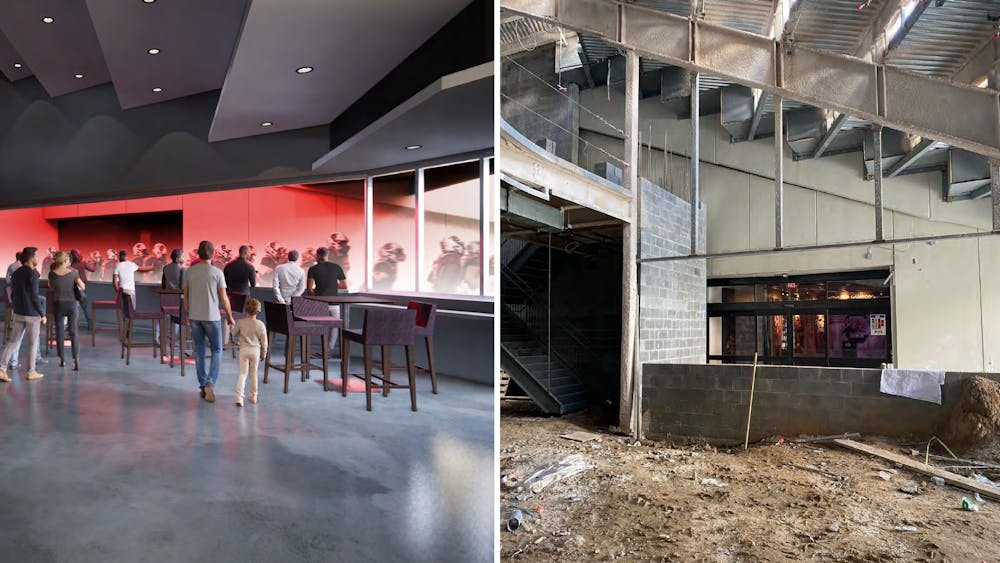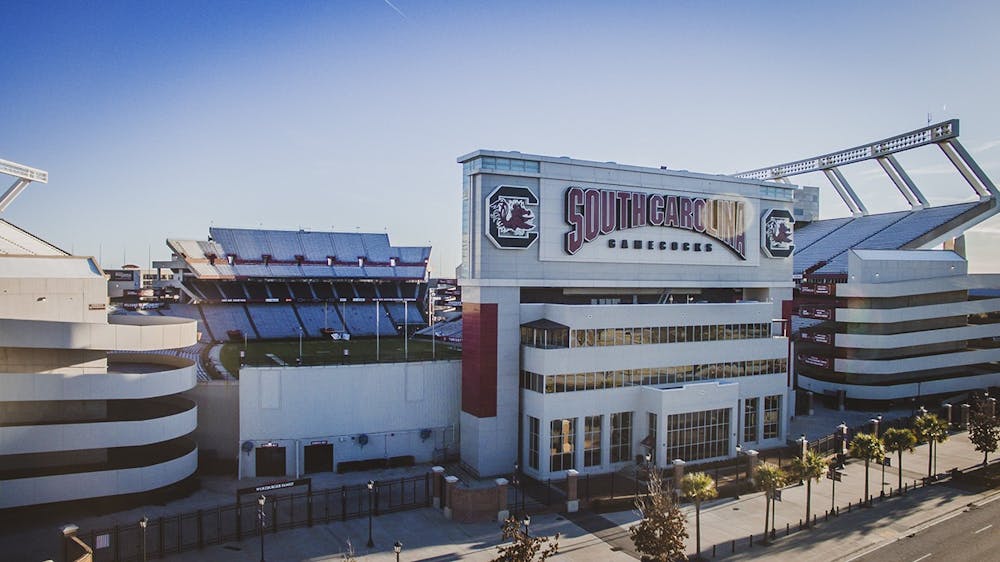Williams-Brice Stadium is currently undergoing its largest construction project in 25 years, for which construction began in December.
The project, which includes upgrades to four sections of the stadium, will provide high-end air-conditioned accommodations for roughly 8,000 patrons, athletic director Ray Tanner said.
“As you know, it can be pretty hot here in the early games in the football season, and it can be cold late, so it's just an improvement that we felt was overdue,” Tanner said.
The four sections will be given new names: the Traditions Club in the stadium’s east concourse, the Horseshoe Club in the west, the 2001 Club in the southwest and Cockaboose Clubs in the south.
Some specific upgrades to the stadium include a bar in the Cockaboose Club, a patio in the Traditions Club and a glass divider in the 2001 Club that will allow attendees to watch players enter the field from nearby.

“It's a very unique design that coach Muschamp had a hand in that sort of resembles how the Cowboys come out at AT&T stadium,” Tanner said. “If you've ever seen them come out the tunnel, they kind of come out of an area where they have their fan base.”
This round of construction clocked in at $22.5 million, beneath the $25 million debt limit set for the year. Steve Eigenbrot, executive associate athletic director for development, said the project was very cost-efficient.
“We felt like it was a really good bang for our buck,” Eigenbrot said. “The large part of the stadium project is renovating previously existing spaces and repurposing them. Very little of it is actually new construction.”
The project has been able to continue despite delays on other construction around the university due to COVID-19.
“I think that’s the key to this project, that we were well underway,” Tanner said. “Had we stopped at the point that we were at, it certainly would have presented some tremendous challenges as we move towards football, so we're grateful that the state allowed us to continue this process.”
While physical changes are being made to the stadium, changes to the way football must function at USC during the pandemic are in the works.
The main issue holding USC back from a firm statement on Williams-Brice’s capacity in the fall, Eigenbrot said, is the lack of requirements given from guiding organizations.
“I think the problem is that we need more detail. The plan is going to be based off of the requirements that are given, and absent of the requirements, you can't really have too much of a plan,” Eigenbrot said.
In lieu of definitive statements about event capacity from the state government or health officials, the university’s Future Planning Group has created various models of potential plans, Chris Rogers, senior associate athletic director for administration, said.
“The sorts of plans that we are putting together, ours are based on, I guess sort of milestone percentages,” Rogers said. “Your starting point will be you open the gates, business as usual, and then sort of building out models at 25% capacity so you can adjust accordingly."
One estimate for Williams-Brice’s capacity in the fall came from Tanner himself on July 8's radio show 107.5 The Game.
“Probably 15,000 would be a number I would throw out. I’ve had some people who have studied that. It might get as high as 20. It might be no fans. We still have some time but not as much as we once did,” Tanner said.
While Tanner only offered these figures as an estimate, both numbers are less than 25% of Williams-Brice’s regular capacity of over 80,000.
Regardless, stadium construction should be finished by the first scheduled game of the 2020 season, and more details should be available soon, according to Rogers.
“The next 30 to 60 days are really going to dictate where we land, ultimately,” he said.

